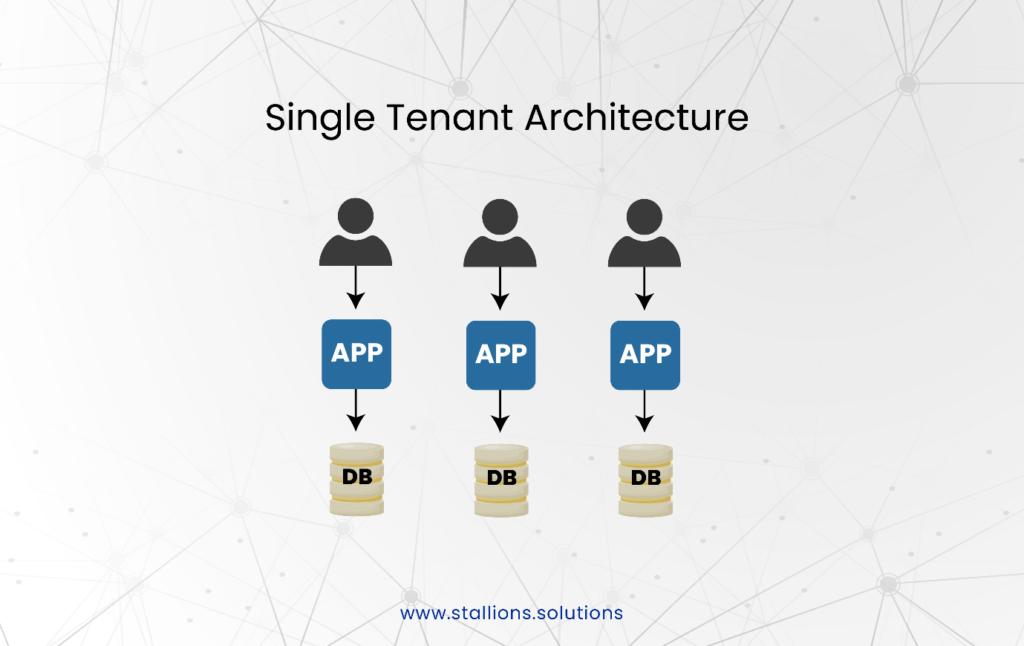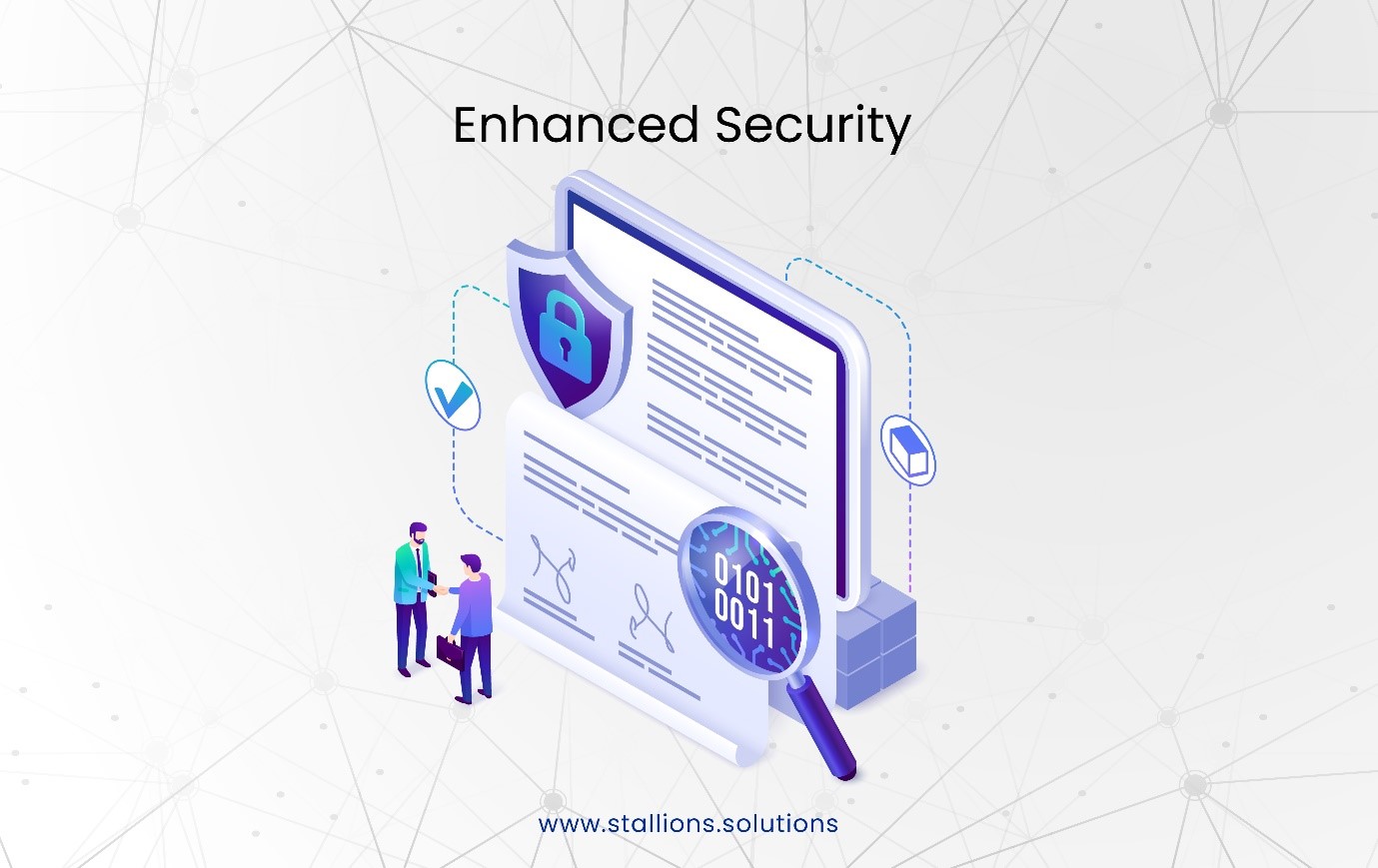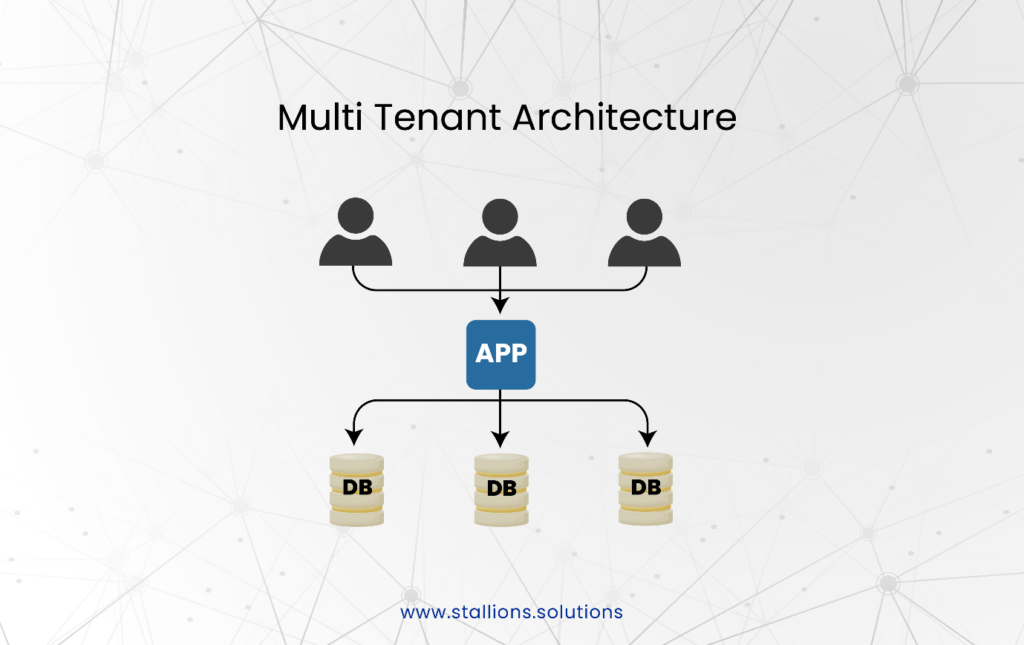When it comes to deploying your applications and services on the Microsoft Azure cloud platform, you have the option to choose between Azure single-tenant and multi-tenant architectures. Each architecture has its own unique characteristics, advantages, and use cases. In this blog, we will go into more details that can help you determine which architecture fits your specific requirements. By understanding the key differences and evaluating factors such as security, performance, scalability, and cost, you can make an informed decision that meets your business goals.
What is Single-Tenant Cloud Architecture?

A single-tenant cloud architecture serves only one client using a software instance and its associated infrastructure/database. All customer data and interactions are kept separate in a single-tenant environment. There is no data exchange, and customer data is not stored in the same database.
Advantages of Single-Tenant Architecture in Azure
Enhanced Security

Single-tenant environments offer higher security since resources are isolated, minimizing the risk of data breaches or unauthorized access.
Performance Control
With dedicated resources, you have more control over resource allocation, ensuring consistent and predictable performance.
Compliance and Regulatory Requirements
Single-tenant architectures are often preferred when compliance or regulatory requirements demand strict data isolation.
Drawbacks of Single-tenant Architecture
Some drawbacks of single-tenant architecture are the following:
Complex Management and Setup
For each customer, you must set up an instance and a database. It gets more difficult to maintain many applications as the customers grow. For small startup teams, single-tenant architecture could be more suitable.
High Costs
Running a single-tenant setup is more expensive than using shared resources. You would require several resources to maintain it if each customer had their own database and computer.
Inefficient resource use
Resources are also likely to be underutilized, resulting in inefficiencies. Since different customers have different usage patterns, giving identical physical resources to each one will result in some customers consuming all their allocated resources—or even more—while other customers use little to none of them.
Use Cases for Single-Tenant Architecture in Azure
Sensitive Workloads
Applications dealing with highly sensitive data, such as financial or healthcare systems, can benefit from the enhanced security of single-tenant environments.
Performance-Critical Applications
Applications that require consistent and guaranteed performance, such as real-time analytics or high-transaction databases, can be better served by single-tenant architectures.
What is Multi-Tenant Cloud Architecture?
A multi-tenant architecture is one in which a single software instance and database serve multiple clients (i.e., tenants). In Azure, multi-tenant environments are created using services like Azure App Service, Azure SQL Database, or Azure Functions.
The main characteristic of multi-tenant architecture is resource pooling, allowing efficient resource utilization and cost-sharing among multiple tenants.
Advantages of Multi-Tenant Architecture in Azure
Some of the advantages of multi-tenant architecture in Azure are the following:
Cost-Effective
Multi-tenant environments enable cost-sharing among tenants, reducing overall infrastructure expenses.
Scalability
With shared resources, it becomes easier to scale up or down based on varying demands, providing high scalability to accommodate many tenants.
Efficient Resource Utilization
Resource pooling allows better utilization of resources, reducing the wastage of unused capacity.
Drawbacks of Multi-tenant Architecture in Azure
Although multi-tenant cloud architecture is usually the best approach for most consumer-facing applications, it has several drawbacks, such as:
Greater security risk
The risks are increased because several customers share resources in a multi-tenant system. Contrary to a single-tenant cloud where security problems are limited to a single client, it is more likely that if one customer’s data is compromised, it will also likely affect other customers.
Lack of cost visibility
Cost separation in a multi-tenant system is far more complicated than in a single-tenant system where every client has a database.
Use Cases for Multi-Tenant Architecture in Azure
Software as a Service (SaaS) Applications
Multi-tenant architectures are commonly used for building SaaS applications, where multiple customers share the same application instance while keeping their data isolated.
Collaboration Platforms
Applications like project management tools or customer relationship management systems, where multiple users collaborate and share data, can benefit from a multi-tenant architecture.
When Should You Use Single Tenant vs. Multi-tenant Architecture?
A single-tenant architecture may be the best option when there are serious privacy and security concerns with customer information in a specific business or sector. The healthcare and financial industries are two good examples.
For example, applications in the healthcare industry must adhere to HIPAA regulations when dealing with patient information. Each hospital might need to install a data center on-site to maintain compliance. The same is true for specific categories of financial data.
Multi-tenant applications are the best choices for most consumer-facing applications. The real cloud has multiple tenants. AWS and other cloud service companies secretly use the same hardware for various clients. Even though every client has a unique Amazon account, the same systems handle consumer data.
Conclusion
Choosing between Azure single-tenant and multi-tenant architectures depends on various factors such as security requirements, performance needs, and cost considerations. Single-tenant architectures offer dedicated resources, enhanced security, and predictable performance, making them suitable for sensitive and performance-critical workloads. On the other hand, multi-tenant architectures provide cost-effectiveness, scalability, and efficient resource utilization, making them ideal for SaaS applications and collaboration platforms. By carefully evaluating your specific requirements, you can make an informed decision and leverage the power of Azure to meet your organization’s goals.





